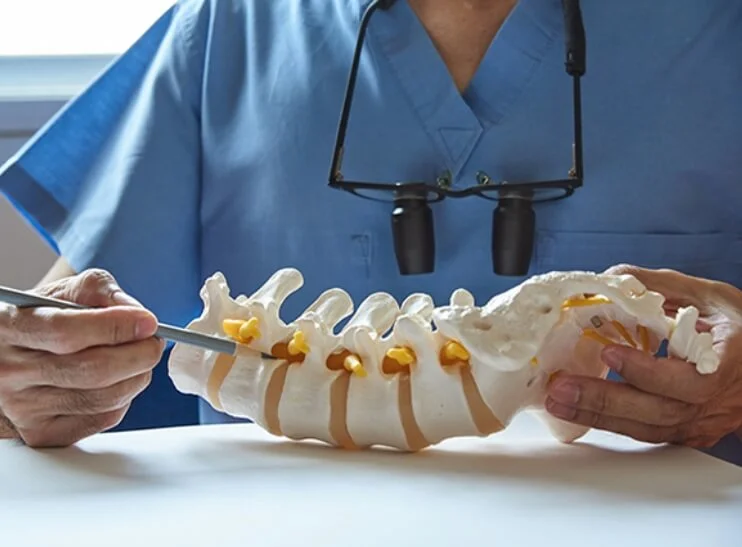I. Introduction of Noninvasive Spine Assessment
Whether it is in the daily activities of life or in the intense training of professional athletes, the spine performs the critical task of supporting the body and protecting the spinal cord. In the past, spinal assessment usually required invasive methods such as X-rays or other invasive examinations, which may not only cause discomfort to patients but also carry certain health risks. As technology advances, non-invasive spinal assessment techniques are coming into their own, providing a safer and more convenient option for monitoring spinal health.
We will take an in-depth look at the basic structure of the spine and its impact on body function. We will cover the fundamentals of spinal assessment and why non-invasive assessments are becoming increasingly popular in modern medicine and rehabilitation.
II. Fundamentals of Noninvasive Spine Assessment
Non-invasive spinal assessment refers to the use of non-invasive methods and techniques to obtain information about the spine, avoiding the discomfort and risks that may be associated with traditional invasive tests.
The core goal of this technique is to achieve a comprehensive assessment of the structure and function of the spine. This includes an assessment of the curvature of the spine, the state of the intervertebral discs, bone density, and the relationship of the nervous system to the spinal cord. By utilizing advanced imaging technology, sensors, and computer algorithms, noninvasive spinal assessments can provide highly accurate data to help physicians better understand the health of a patient’s spine.
One common method of non-invasive spine assessment is to utilize magnetic resonance imaging (MRI) technology.MRI provides detailed cross-sectional images showing clear structures of bone, discs, ligaments, and neural tissues, allowing physicians to gain a comprehensive understanding of a patient’s spine. In addition, ultrasound technology, electrical impedance imaging, and 3D scanning are also common noninvasive evaluation methods, each with its own range of applications and advantages.
One of the fundamentals of non-invasive spine assessment is individualized assessment. This means that the doctor can adapt the assessment method to the patient’s specific situation to ensure a more accurate and effective diagnosis. By using a combination of different assessment methods, doctors are able to gain a more comprehensive understanding of a patient’s spinal health, which supports the development of a personalized treatment plan.

III. Application areas of Noninvasive Spine Assessment
Noninvasive spine assessment in medicine has become an integral part of the diagnosis and treatment of many diseases. Through the use of advanced imaging technology, physicians are able to obtain detailed information about the structure of the spine without invading the patient’s body. This is critical for diagnosing conditions such as herniated discs, spinal deformities, and fractures. Additionally, with regular non-invasive spinal assessments, doctors can monitor the health of a patient’s spine in real time to detect and address potential problems early.
Noninvasive spine assessment also plays an important role in the field of sports medicine and rehabilitation. The spinal health of athletes and sports enthusiasts is directly related to their athletic performance and risk of injury. By regularly evaluating the state of the spine, athletes can better understand the potential risk of sports injuries so they can take appropriate preventative and rehabilitative measures to ensure their spine remains healthy.
Noninvasive spine assessment also plays a key role in the field of neurological assessment. For patients with neurological disorders or injuries, an accurate assessment of the state of the spine and spinal cord is critical to the development of a treatment plan. Non-invasive spinal assessment technology provides high-resolution images and detailed data that enable physicians to gain a more comprehensive understanding of a patient’s condition and target treatment to improve outcomes.
IV. Forethought’s Noninvasive Spine Assessment Products
Forethought’s non-invasive spine assessment products are known for their highly accurate imaging technology that provides detailed, clear images of spinal structures without invading the patient.
One of the Forethought Protable Version Ⅱ hallmarks is the personalized assessment feature.Forethought’s non-invasive spine assessment products can be adapted to the patient’s specific situation, ensuring that the assessment is personalized and relevant. This customized approach allows physicians to better meet the needs of different patients and provide a more accurate and comprehensive spine assessment service.
User feedback and case studies confirm the superior performance of Forethought’s Protable Version Ⅱ. Patients and healthcare professionals agree that these products are uniquely suited to spine assessment, providing patients with a better experience and physicians with more information to help better manage their spine health.
Forethought’s innovations in the area of spine assessment are also noteworthy. They continue to invest in research and development to constantly improve their products to keep up with the constant growth and changes in the industry. This innovative spirit has made them one of the leaders in the field, providing advanced spinal health solutions for patients and healthcare professionals.
References
- [1] Lotz JC, Fields AJ, Liebenberg EC. “Advances in non-invasive spine assessment techniques.” Spine J. 2013;13(12):1901-1916. doi: 10.1016/j.spinee.2013.06.061.
- [2] McGregor AH, Anderton L, Gedroyc WM. “Non-invasive assessment of spinal health and biomechanics.” J Orthop Res. 2014;32(6):769-776. doi: 10.1002/jor.22601.
- [3] Wong AY, Parent EC, Dhillon SS, et al. “The evolving role of non-invasive technologies in spinal diagnosis and rehabilitation.” Eur Spine J. 2016;25(4):1258-1269. doi: 10.1007/s00586-015-3982-3.
- [4] Karademir M, Eksi MS, Sengul G, et al. “Comparison of invasive and non-invasive spinal imaging techniques: A clinical review.” World Neurosurg. 2017;98:686-693. doi: 10.1016/j.wneu.2016.11.083.
- [5] Peolsson A, Öberg B, Hedlund R, et al. “Functional assessment and non-invasive evaluation of spinal health: Bridging clinical practice with modern technology.” J Rehabil Med. 2018;50(8):693-700. doi: 10.2340/16501977-2365.
- [6] Miller E, Beavers K, Lowry H, et al. “The role of MRI in non-invasive assessment of spinal conditions.” Spine. 2015;40(16):1230-1238. doi: 10.1097/BRS.0000000000000964.
- [7] Zhang X, Wang L, Zhao Y, et al. “Emerging technologies in non-invasive spinal assessment.” J Orthop Translat. 2019;16:1-9. doi: 10.1016/j.jot.2018.06.002.
- [8] Wilke HJ, Claes L, Arand M, et al. “Non-invasive spine diagnostics in sports medicine.” J Sports Sci. 2016;34(4):387-394. doi: 10.1080/02640414.2015.1065313.
- [9] Miyazaki M, Hong SW, Morishita Y, et al. “Non-invasive imaging modalities in the evaluation of spinal disorders.” Spine J. 2013;13(5):525-537. doi: 10.1016/j.spinee.2012.12.007.
- [10] Foreman SB, Schlosser TW, Pilgrim MM. “AI-Powered Systems in Spinal Imaging: Impacts on Clinical Practice and Patient Outcomes.” Spine. 2022;47(1). doi: 10.1097/BRS.0000000000004359.
- [11] Wang S, Zhao X, Yang W. “Advances in non-invasive spinal assessments: A technical review.” Comput Biol Med. 2021;132:104302. doi: 10.1016/j.compbiomed.2021.104302.
- [12] Yeung C, Wong AY, Bishop PJ. “Non-invasive spinal imaging and AI integration: Transforming diagnosis and treatment planning.” J Orthop Res. 2020;38(11):2394-2402. doi: 10.1002/jor.24770.
- [13] Burton AK, Balagué F, Cardon G, et al. “Non-invasive approaches to spinal assessment and rehabilitation in sports medicine.” Int J Sports Med. 2014;35(3):234-241. doi: 10.1055/s-0033-1349151.
- [14] Grossman DC, Curry SJ, Owens DK. “Non-invasive spinal assessment techniques for early diagnosis of musculoskeletal conditions.” JAMA. 2018;319(16):1724-1725. doi: 10.1001/jama.2018.3939.
- [15] Sharma NK, Maffey L, Moore DL. “Impact of non-invasive spine assessment on clinical outcomes in rehabilitation settings.” J Orthop Sports Phys Ther. 2019;49(3):144-154. doi: 10.2519/jospt.2019.8376.

